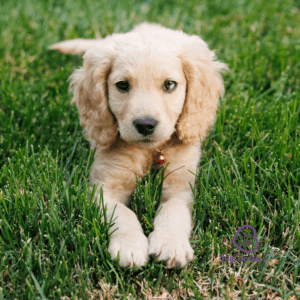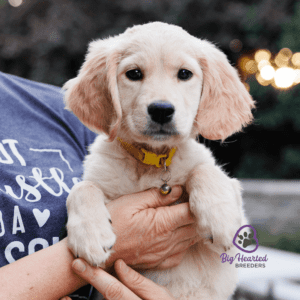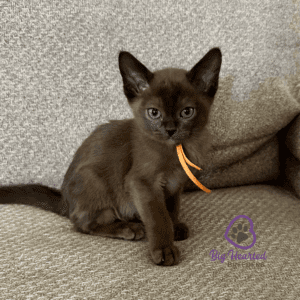Essential Oils: A Holistic Approach to Pet Care
 Have you ever wondered if essential oils (EOs) could benefit your furry friends? If you’re a pet parent, you’ve likely explored various ways to keep them healthy and happy.
Have you ever wondered if essential oils (EOs) could benefit your furry friends? If you’re a pet parent, you’ve likely explored various ways to keep them healthy and happy.Essential oils, known for their holistic health benefits in humans, can also offer amazing advantages for our pets. However, it’s crucial to understand which oils are safe and how to use them properly. Let’s dive into the world of EOs for cats and dogs!
What Are Essential Oils?
Essential oils are concentrated plant extracts that capture the plant’s scent, flavor, and beneficial properties. Various cultures have used these oils for centuries for their healing and therapeutic benefits. They vary from calming lavender to invigorating peppermint. EOs offer a range of benefits for humans, and many pet owners are now exploring their potential for animals.
Why Consider Essential Oils for Pets?
Holistic pet care is becoming increasingly popular, with many pet owners seeking natural alternatives to conventional treatments. EOs can help address a variety of issues in pets, such as anxiety, skin irritations, and even joint pain. But, like any other treatment, it’s essential to use them correctly to avoid any adverse effects.
Essential Oils and Safety: What You Need to Know
Before you start using essential oils on your pets, safety should be your top priority. Not all EOs are safe for animals, and improper use can lead to serious health issues. Here are some general guidelines:
– Dilution is Key: Always dilute essential oils before applying them to your pet’s skin. A good rule of thumb is to use a 0.5% to 1% dilution for dogs and even lower for cats.
– Quality Matters: Choose high-quality, therapeutic-grade essential oils. Poor-quality oils may contain harmful additives.
– Know the Toxic Ones: Some oils, like tea tree, pennyroyal, and wintergreen, are toxic to pets and should be avoided.
Safe Essential Oils for Dogs
Dogs, including our affectionate Mini Golden Retrievers, can benefit from certain EOs. Here are a few safe options:
– Lavender: Known for its calming properties, lavender can help reduce anxiety and stress in dogs. It’s perfect for those car rides or visits to the vet.
– Chamomile: Another calming oil, chamomile, can soothe irritated skin and ease digestive issues.
– Ginger: Great for dogs with digestive problems, ginger can help with nausea and improve digestion.
– Frankincense: This oil supports immune health and has anti-inflammatory properties.
 Safe Essential Oils for Cats
Safe Essential Oils for Cats
Cats are more sensitive to essential oils than dogs, so extra caution is needed. However, some oils can be beneficial when used properly:
– Cedarwood: Helps repel fleas and ticks naturally and is safe for cats when diluted.
– Rosemary: Can improve circulation and act as a natural flea repellent.
– Clary Sage: Known for its calming effects, it can help reduce stress and anxiety in cats.
How to Use Essential Oils for Pets
 Now that you know which oils are safe, let’s discuss how to use them effectively. Here are some practical tips:
Now that you know which oils are safe, let’s discuss how to use them effectively. Here are some practical tips:– Diffusion: Using a diffuser is one of the safest ways to introduce essential oils to your pets. Ensure the room is well-ventilated and your pet can leave the area if they wish.
– Topical Application: When applying oils topically, always dilute them with a carrier oil like coconut or olive oil. Test on a small area first to check for any adverse reactions.
– Massage: Incorporate essential oils into a gentle massage to help relax your pet and relieve muscle tension.
My Journey with Essential Oils
 As a proud breeder of Mini Golden Retrievers, I have researched and use various holistic methods to keep my dogs healthy and happy. Many dogs get anxious during thunderstorms. After some research and consultation with a holistic vet, I decided to try the lavender essential oil.
As a proud breeder of Mini Golden Retrievers, I have researched and use various holistic methods to keep my dogs healthy and happy. Many dogs get anxious during thunderstorms. After some research and consultation with a holistic vet, I decided to try the lavender essential oil.I dilute it and use a diffuser during storms. The change was remarkable—my dogs seemed much calmer and less stressed.
Another time, one of my dogs, Alina, developed a minor skin irritation. Chamomile oil, diluted and applied to the affected area, worked wonders in soothing her skin. These experiences have made me a firm believer in the power of essential oils when used correctly.
Frequently Asked Questions
 Q: Can I use essential oils on my kitten or puppy?
Q: Can I use essential oils on my kitten or puppy?A: It’s best to avoid using most essential oils on very young animals. Their systems are still developing, and they are more sensitive to the effects of essential oils.
However, some companies develop and dilute certain essential oils specifically for children. These can be great for even newborn puppies and kittens. These include doTerra’s Calmer, Stronger and Tamer oils.
Q: How often can I use essential oils on my pet?
A: This depends on the oil and the issue you’re addressing. For example, lavender for anxiety can be used as needed, but always monitor your pet for any signs of irritation or discomfort.
Q: Can essential oils replace conventional veterinary care?
A: Essential oils should complement, not replace, conventional veterinary care. Always consult your vet before introducing new treatments to your pet’s regimen.
A Holistic Approach to Pet Care
 Essential oils can be a wonderful addition to your holistic pet care routine. When used correctly, they offer numerous benefits, from calming anxiety to soothing skin irritations. Remember to prioritize safety, choose high-quality oils, and consult your vet to ensure the best care for your furry friends.
Essential oils can be a wonderful addition to your holistic pet care routine. When used correctly, they offer numerous benefits, from calming anxiety to soothing skin irritations. Remember to prioritize safety, choose high-quality oils, and consult your vet to ensure the best care for your furry friends.By incorporating essential oils into your pet care routine, you’re not only exploring natural alternatives but also fostering a closer bond with your pets. Have you tried essential oils for your pets? What was your experience? Share your stories and let’s continue learning together for the well-being of our beloved animals!




 Safe Essential Oils for Cats
Safe Essential Oils for Cats


